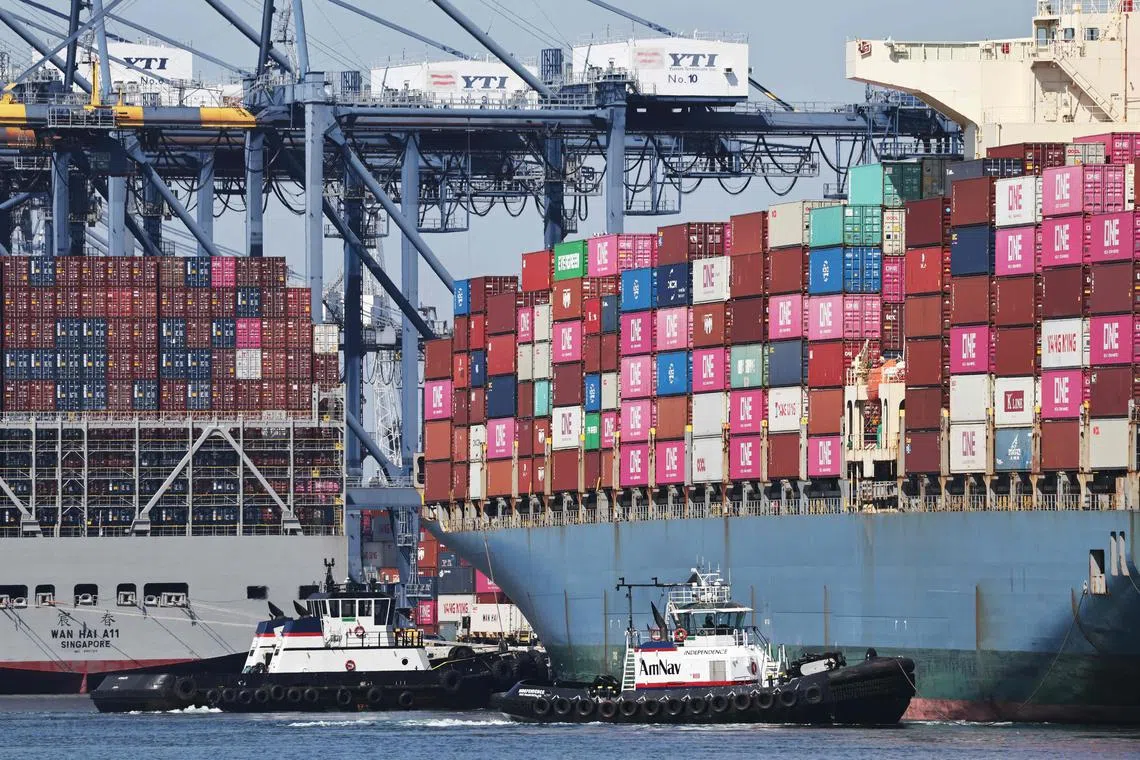Trump says countries to start paying tariffs on Aug 1; floats range of 10% to 70%
Sign up now: Get ST's newsletters delivered to your inbox

Many major trading partners, such as Japan, South Korea and the European Union, are still working to finalise deals.
PHOTO: AFP
Follow topic:
- Trump plans to send letters to trading partners from July 4, outlining unilateral tariff rates ranging from 10% to 70%.
- Tariffs, impacting "10 or 12" countries initially, will be implemented from August 1 if deals aren't reached by July 9.
- Deals struck with the UK and Vietnam suggest a move toward individual agreements, but details and impacts remain unclear.
AI generated
WASHINGTON – US President Donald Trump said that his administration will start sending out letters to trading partners on July 4
Mr Trump told reporters that about “10 or 12” letters would go out on July 4, with additional letters coming “over the next few days”.
“I think by the ninth they’ll be fully covered,” Mr Trump added, referring to a July 9 deadline he initially set for countries to reach deals with the US to avoid higher import duties he has threatened.
“They’ll range in value from maybe 60 or 70 per cent tariffs to 10 and 20 per cent tariffs,” he added.
The top tier of that range, if formalised, would be higher than any tariffs the President initially outlined during his “Liberation Day” roll-out in early April. Those ranged from a 10 per cent baseline tariff on most economies up to a maximum of 50 per cent.
Mr Trump did not elaborate on which countries would get the tariffs or whether that meant certain goods would be taxed at a higher rate than others.
He said that countries would “start to pay on Aug 1. The money will start going to come into the United States on Aug 1”.
Tariffs are typically paid by the importer or an intermediary acting on the importer’s behalf. But it is often the end consumer that ultimately shoulders much of the cost.
Mr Trump has long threatened that if countries fail to reach deals with the US before next week’s deadline, he would simply impose rates on them, raising the stakes for trading partners who have rushed to secure agreements with his administration.
He initially announced his higher so-called “reciprocal” tariffs on April 2, but paused those for 90 days to allow countries time to negotiate, putting in place a 10 per cent rate during that interval.
So far, the US has announced deals with the UK and Vietnam
Asked on July 3 if more deals were on the way, Mr Trump responded that “we have a couple of other deals, but you know, my inclination is to send a letter out and say what tariffs they are going to be paying”.
“It’s much easier,” he said.
He announced the Vietnam deal on July 2, saying that the US would place a 20 per cent tariff on Vietnamese exports to the US and a 40 per cent rate on goods deemed trans-shipped through the nation – a reference to the practice whereby components from China and possibly other nations are routed through third countries on their way to the US.
While the rates are lower than the 46 per cent duty he imposed on Vietnam initially, they are higher than the universal 10 per cent level. And many of the particulars of the deal are still unclear, with the White House yet to release a term sheet or publish any proclamation codifying the agreement.
Still, investors who have eagerly anticipated any deals between the US and trading partners were buoyed on July 2 by the Vietnam announcement, which saw share prices of American manufacturers with facilities in the country rise.
Many major trading partners, however, such as Japan, South Korea and the European Union, are still working to finalise deals.
Mr Trump has expressed optimism about reaching an agreement with India but has spoken harshly about the prospects of an accord with Japan, casting Tokyo as a difficult negotiating partner. He intensified his criticism this week, saying that Japan should be forced to “pay 30 per cent, 35 per cent or whatever the number is that we determine”.
He also said on July 2 he was not considering delaying next week’s deadline. Asked about any potential extension of talks, US Treasury Secretary Scott Bessent said earlier that Mr Trump would make the final call.
“We’re going to do what the President wants, and he’ll be the one to determine whether they’re negotiating in good faith,” Mr Bessent said on CNBC when asked whether the deadline might be lengthened. BLOOMBERG

